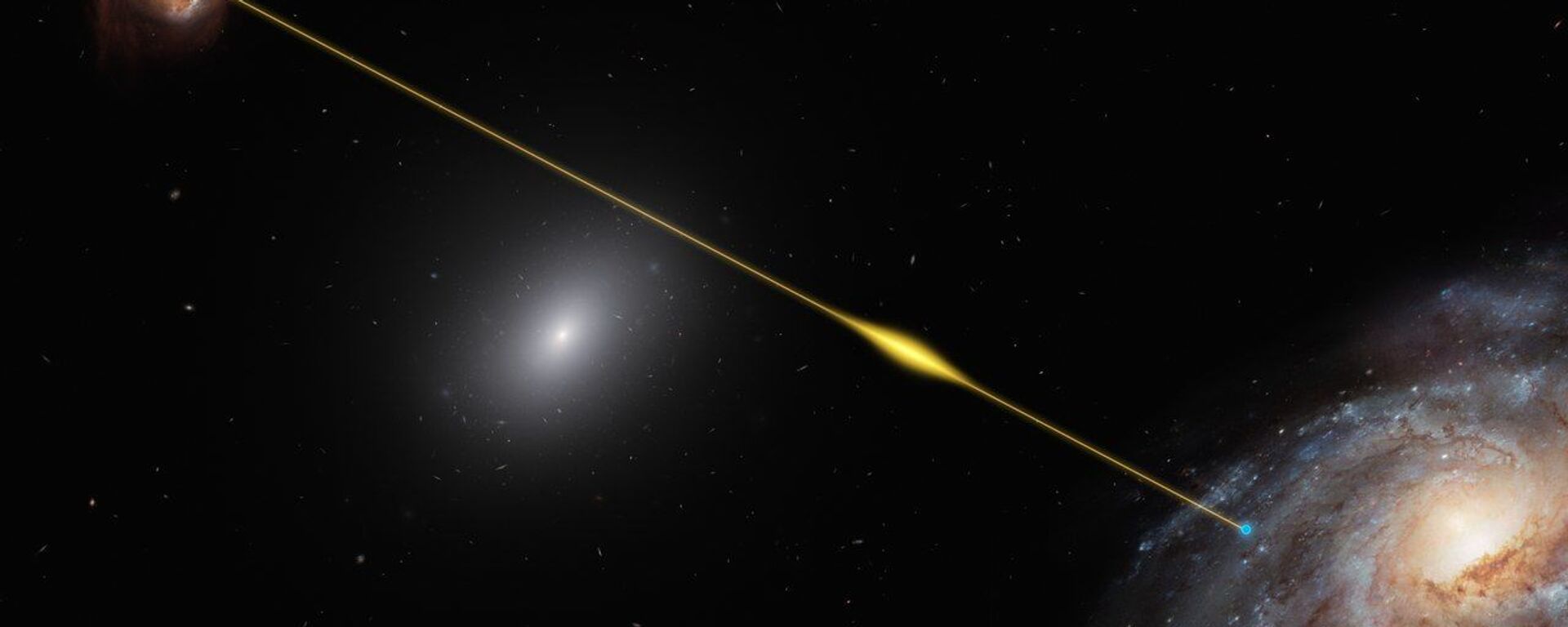https://sputnikglobe.com/20210914/deep-space-mystery-unusual-radio-signal-detected-near-center-of-the-milky-way-baffles-scientists-1089073197.html
Deep Space Mystery: Unusual Radio Signal Detected Near Centre of Milky Way Baffles Scientists
Deep Space Mystery: Unusual Radio Signal Detected Near Centre of Milky Way Baffles Scientists
Sputnik International
The signal source seems to have no X-ray counterpart, and does not appear to be a star, low-mass or dead. 14.09.2021, Sputnik International
2021-09-14T16:54+0000
2021-09-14T16:54+0000
2022-12-05T09:41+0000
science & tech
study
signal
detection
milky way
radio
https://cdn1.img.sputnikglobe.com/img/107793/68/1077936853_1:0:1919:1079_1920x0_80_0_0_1fa057f7e650fea4d8fa55fd9ee0343b.jpg
A strange repeating radio signal that appears to differ from other previously detected energy signatures has been spotted near the centre of the Milky Way, Live Science reports.According to the media outlet, the source of the signal, detected by the Australian Square Kilometre Array Pathfinder (ASKAP) radio telescope and designated as ASKAP J173608.2−321635 – exhibits a rather unusual behavior that "doesn't quite fit the profile of any known type of celestial body", as it appears "bright in the radio spectrum for weeks at a time” only to vanish completely "within a day".The signal appeared some 13 times in an ASKAP survey conducted between April 2019 and 2020, reportedly never lasting for more than a few weeks, with authors of the new study posted on the pre-print server arXiv suggesting that the signal "may represent part of a new class of objects being discovered through radio imaging surveys".The source of the signal also seemed to have no X-ray counterpart, with the researchers deeming it unlikely to be a flaring low-mass star or a dead star like pulsar or magnetar.They do note, however, that some properties of the source are "different from those of the GCRTs.""In order to constrain the origin of ASKAP J173608.2−321635, continued radio monitoring, pulsation searches at higher frequencies, and multi-wavelength observations are necessary," the researchers said in the conclusion of their study.
https://sputnikglobe.com/20210521/mysterious-fast-radio-bursts-discovered-in-arms-of-spiral-galaxies-1082957152.html
milky way
Sputnik International
feedback@sputniknews.com
+74956456601
MIA „Rossiya Segodnya“
2021
News
en_EN
Sputnik International
feedback@sputniknews.com
+74956456601
MIA „Rossiya Segodnya“
Sputnik International
feedback@sputniknews.com
+74956456601
MIA „Rossiya Segodnya“
science & tech, study, signal, detection, milky way
science & tech, study, signal, detection, milky way
Deep Space Mystery: Unusual Radio Signal Detected Near Centre of Milky Way Baffles Scientists
16:54 GMT 14.09.2021 (Updated: 09:41 GMT 05.12.2022) The signal source seems to have no X-ray counterpart, and does not appear to be a star, low-mass or dead.
A strange repeating radio signal that appears to differ from other previously detected energy signatures has been spotted near the centre of the Milky Way, Live Science reports.
According to the media outlet, the source of the signal, detected by the Australian Square Kilometre Array Pathfinder (ASKAP) radio telescope and designated as ASKAP J173608.2−321635 – exhibits a rather unusual behavior that "doesn't quite fit the profile of any known type of celestial body", as it appears "bright in the radio spectrum for weeks at a time” only to vanish completely "within a day".
The signal appeared some 13 times in an ASKAP survey conducted between April 2019 and 2020, reportedly never lasting for more than a few weeks, with authors of the new study posted on the pre-print server arXiv suggesting that the signal "may represent part of a new class of objects being discovered through radio imaging surveys".
The source of the signal also seemed to have no X-ray counterpart, with the researchers deeming it unlikely to be a flaring low-mass star or a dead star like pulsar or magnetar.
Instead, the team argued that the so-called galactic centre radio transient (GCRT) – described by the media outlet as a "rapidly glowing radio source that brightens and decays near the Milky Way's centre, usually over the course of a few hours” – appears to be the closest match to the signal in question.
They do note, however, that some properties of the source are "different from those of the GCRTs."
"In order to constrain the origin of ASKAP J173608.2−321635, continued radio monitoring, pulsation searches at higher frequencies, and multi-wavelength observations are necessary," the researchers said in the conclusion of their study.


